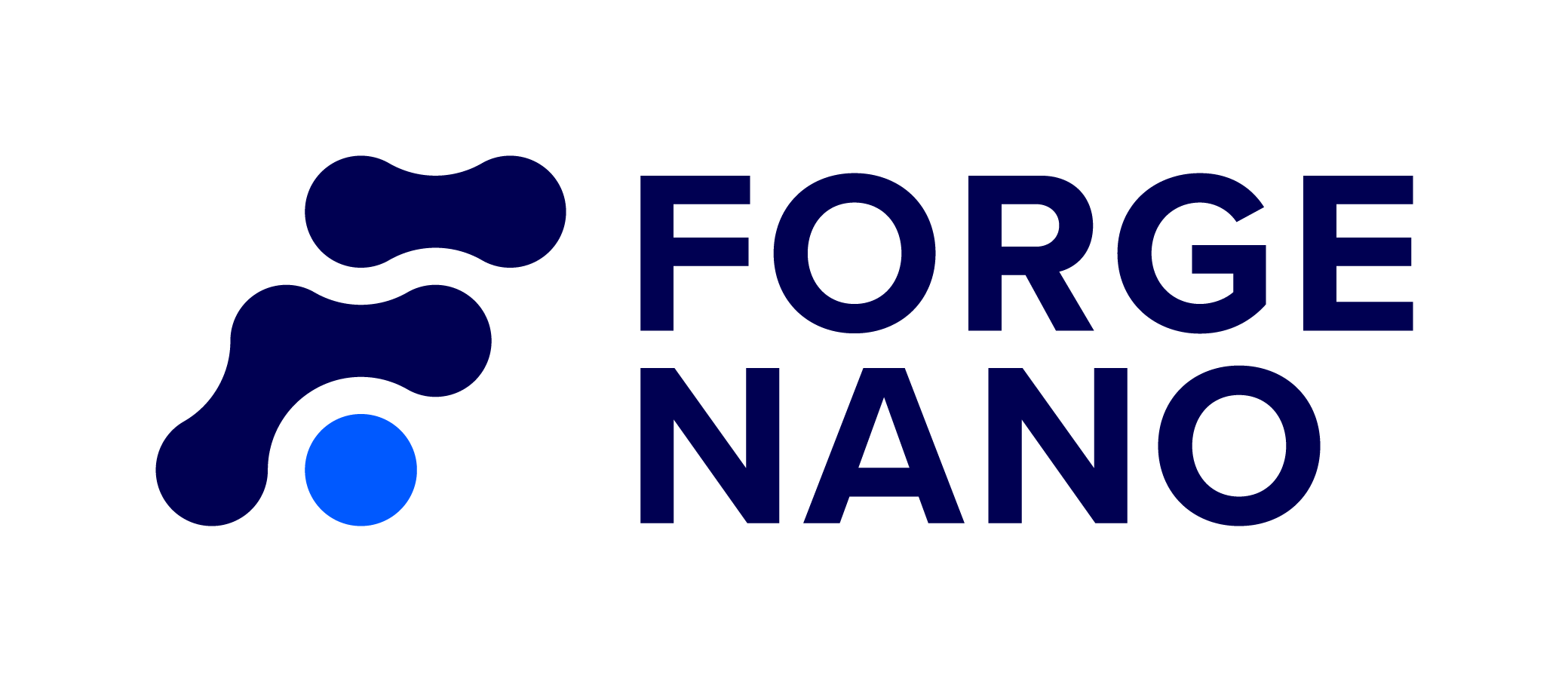DRIVING BATTERY SAFETY WITH NANO ENGINEERING
BETTER BATTERIES WITH ADVANCED SURFACE ENGINEERING
Lithium-ion batteries are undergoing constant innovation driven by both government and privately funded research endeavors. Over the next 10 years, the market growth in lithium ion-batteries is predicted to grow by as much as 10% each year, meaning by 2030 the battery market is expected to double. As our dependence on, and understanding of, these materials grows, we strive to push the limits of performance, capacity, and lifetime. But as lithium–ion batteries have become a vital part of our daily lives, as a staple in energy storage, we must not neglect safety.
Building upon over 30 years of academic endeavors, Forge Nano has brought Atomic Layer Deposition (ALD) to the forefront of industrial applications and contributed, without contest, to innovation in the field of lithium–ion batteries. Most recently with an eye towards improving cell longevity, Forge Nano’s Picoshield® battery materials have proven the effectiveness of nano–protective layers for elevating both performance and safety.
LEARN MORE
Double the Coatings, Triple the Benefits
Benefits of ALD to battery performance have been well documented in literature, however, Forge Nano is bringing these benefits to commercial technologies. Recent data from a large automotive OEM show Forge Nano’s Picoshield® applied at both electrodes leads to reliable performance enhancements in three key categories: lowered cell resistance, longer lifetime, and enhanced safety.
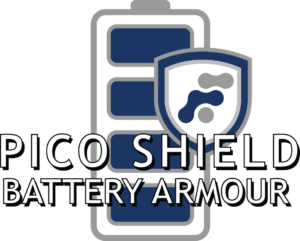
Atomic layer deposition allows for directed addition of specific ions to the surface of battery materials. Specifically, ALD, a gas-phase reaction, leads to passivation of reactive surface sites leading to conformal coatings on the electroactive particles. These coatings provide physical protection to the key components of lithium–ion batteries, the electrodes. As barriers, ALD protects electrodes against parasitic reactions with the electrolyte, which can be chemically unstable when the battery operates at increased voltages and temperatures. In addition, these barriers work to mechanically stabilize the electrode surface. Specifically, Forge Nano’s ALD process can prevent metals from migrating away from the surface of the cathode thereby preventing dissolution of the active material and loss of capacity in the cell. Preventing both metal ion migration and the byproducts of electrolyte breakdown from depositing on the negative electrode keeps cell resistance low as the battery cycles. But this is only the first layer of protection provided by ALD, so to speak. Forge Nano’s ultrathin coatings also lead to better lithium-ion conductivity by reducing the associated energy barrier to lithium insertion/desertion at the cathode during battery discharge and charge. All pathways to reduce cell resistance in turn lead to higher capacity retention over the lifetime of the cell.
Finally, cycling conditions which physically stress the various cell components can lead to unsafe battery responses. External variables such as temperature fluctuations and fast charge/discharge scenarios are made significantly more stable by the mechanical and electrochemical shield provided by Forge Nano’s ALD process.
Picoshield automotive materials show up to 4X increase in lifetime
Thwarting Failure Pathways
Batteries have multiple failure pathways, but some of the most critical for Forge Nano and commercial partners to investigate, are those that have potential for causing harm. Thermal runaway is a core occurrence during battery failure. Whether this process is triggered by poor cell construction, internal short circuits, extreme temperature fluctuations or physical abuse, the result is the same: uncontrolled chain reactions that generate a large amount of heat in a short period of time. Such events lead to explosions and fires, and most importantly, these outcomes pose risk for serious harm to the consumer. For this reason, commercial cells undergo a battery of safety testing. For multiple battery chemistries recently investigated (LCO, NMC, Graphite), Forge Nano’s ALD-optimized Picoshield® cells consistently out-perform their uncoated counterparts.
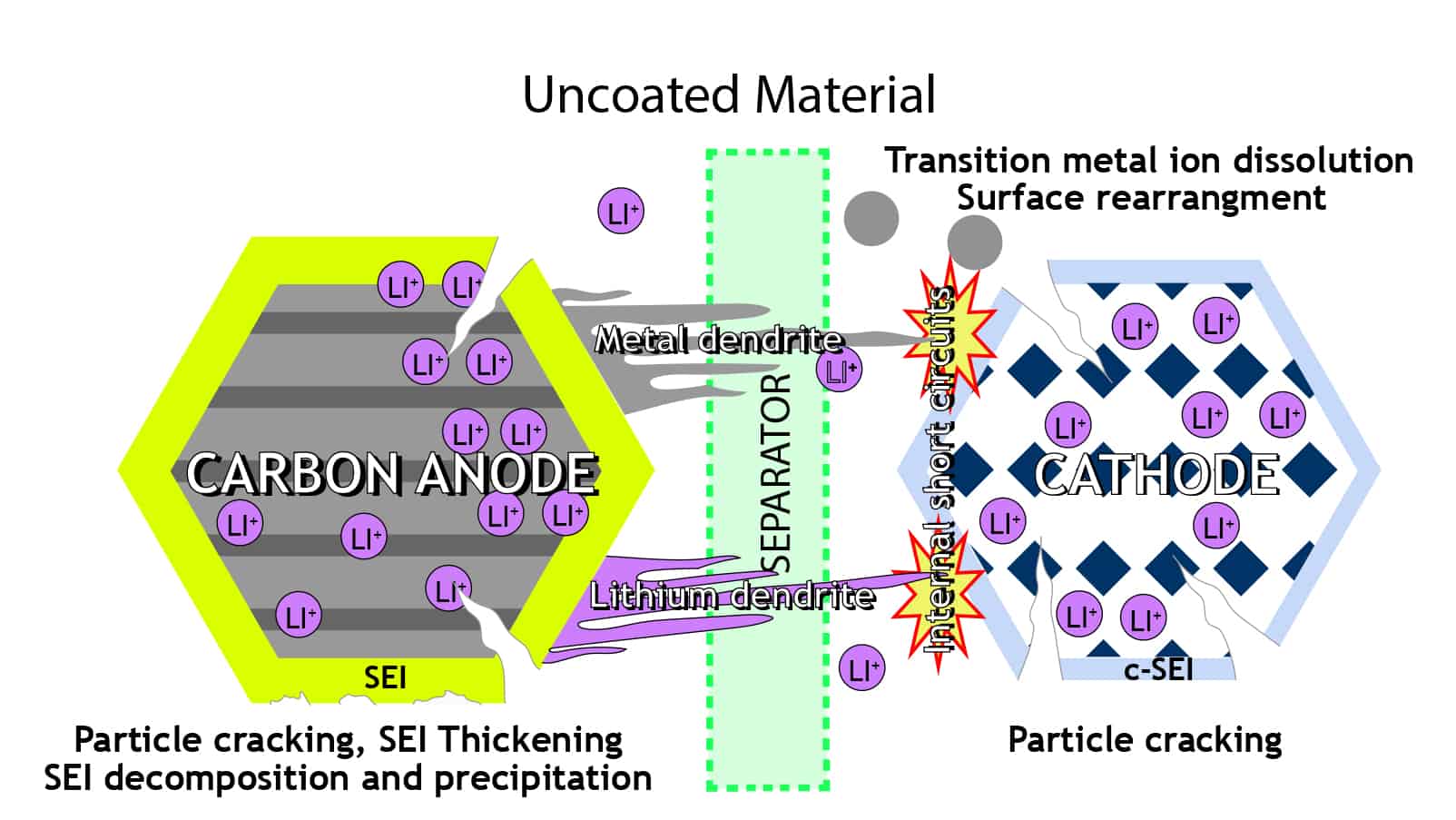
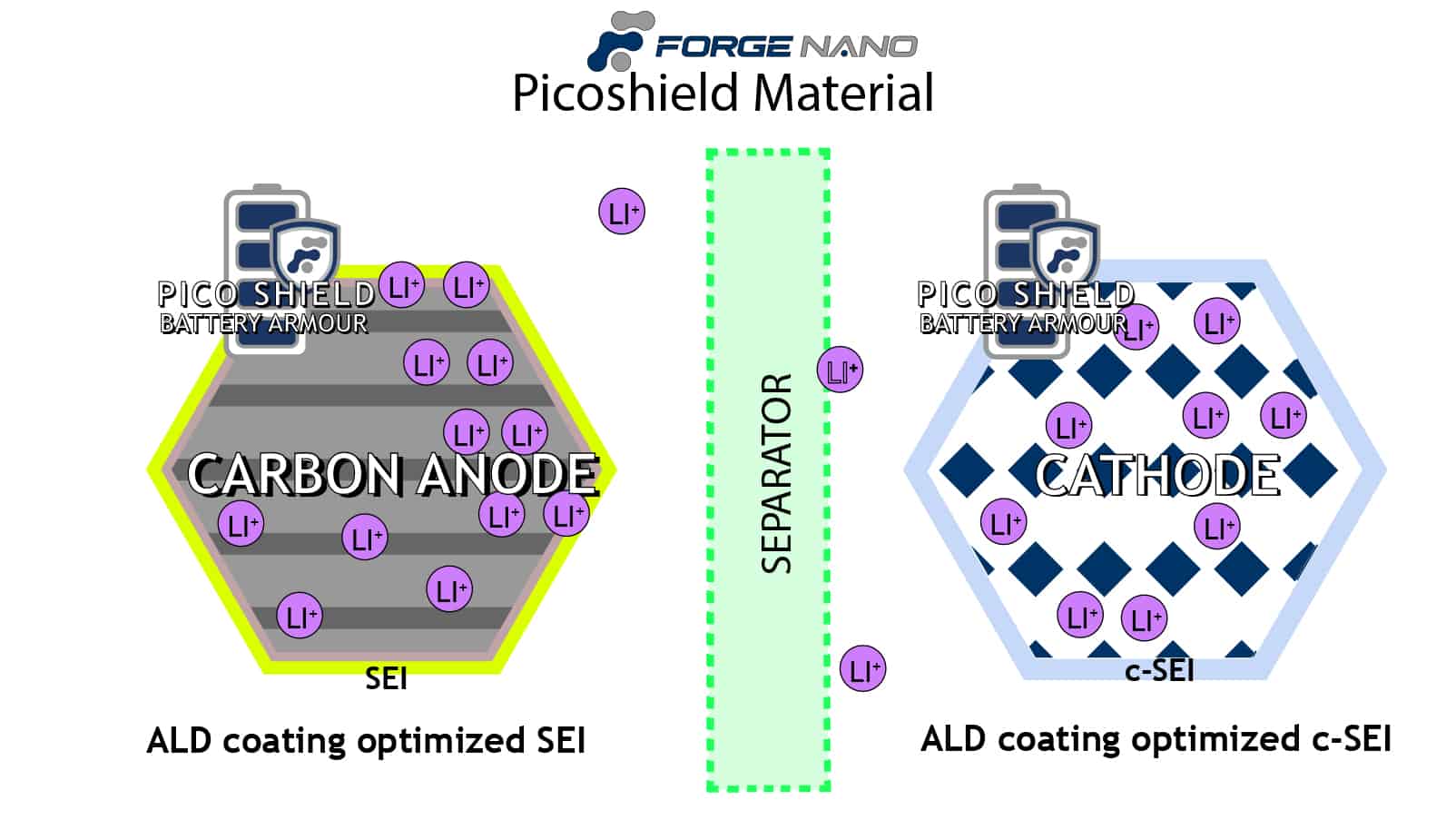
ALD cells have stood their ground in a number of standard tests for the assessment of safety and durability in lithium–ion cells including accelerated rate calorimetry (ARC), overcharge, and nail penetration. Nail penetration testing is meant to simulate internal short circuits in fully charged cells, and it leads to the most direct cell failure. While Forge Nano’s Picoshield® is no match for a 3mm steel nail, ALD cell performance does not go without honorable mention. ALD-optimized cells exhibit improved heat dissipation post penetration as measured by thermocouples placed on either side of the cell. Heat dissipation across the cell is preferable as it is safer than localized areas of higher intensity heat.
ALD cells also exhibit lower reactivity during thermal runaway and overvoltage testing. ARC testing involves stepwise heating of cells until they are no longer stable and undergo thermal runaway. Following multiple “heat and wait” intervals, ALD coated cells show less heat generation overall, and lower self-heating rates across multiple replicates. Similar results are observed for cells taken past safe operating voltages. What was most impressive about Picoshield® performance? Consistent performance across multiple cells.
Keeping it cool...
Picoshield materials reduce likelihood of a thermal event during catastrophic cell failure.
Destructive cell testing using ARC, shows picoshield materials have:
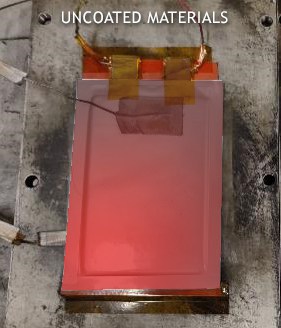
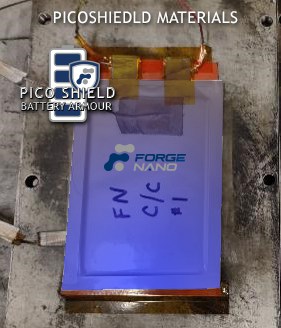
By optimizing heat dissipation ALD prevents localized heating in the cell.
Directional Data Putting ALD on the Map
In commercial products, cell predictability and reproducible performance is paramount, particularly as it pertains to safety. Early safety testing on commercial scale products has shown that Forge Nano’s ALD products are exceeding the expectations of the state–of–the–art. With few rivals in the US market, Forge Nano is making its way to the top of the class in enhanced materials for energy storage technologies.
LEARN MORE
